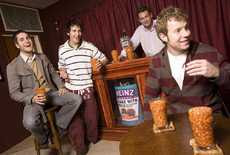People in Da Nang will have a fresh opportunity to learn more about the art of tuong (traditional Vietnamese classical drama) at the Nguyen Hien Dinh Theatre this December.  |
| Night at the opera: Artists from Nguyen Hien Dinh Theatre perform an excerpt from My Chau. |
A photo and sculpture workshop titled "Exploring the Art of Tuong" will be held and photos and sculptures made depicting the characteristics of the art.
From December 1 to 15, tuong artists will perform at the theatre and explain the beauty and meaning behind the costume and stage sets.
Four local photographers and six sculpture artists will take photos, make sculptures and design souvenirs.
Their work will then be displayed at an exhibition held between December 17 and 26, during which tuong artists will exchange ideas with other artists, researchers and students.
The photographs and sculptures will then be auctioned off to support local tuong artists.
Noted musicological professor Tran Van Khe will chair a talk on the art of tuong, which will be broadcast live on local television.
Tourists can also join a tuong mask painting class scheduled for between December 17 and 26 at Bach Dang Road, Da Nang city.
Around 1,000 white masks will be sold to tourists, who will be instructed in how to paint them in the tuong style.
The ten most beautiful masks will be selected and auctioned to raise money for underprivileged local children. The money raised from the masks (sold for US$1 each) will also be given to the children.
"We choose December to implement the programme as this is high season for tourism in Hoi An, Hue and Da Nang," said Nguyen Hung, who initiated the programme. "We hope the event can help attract more tourists to Da Nang and help create a 24-hour tourism programme."
He said that after the initial programme he would organise regular tuong programmes for tourists. A festival of traditional Asian dramas will be held in the city sometime next year.
According to Tran Dinh Sanh, director of the Nguyen Hien Dinh theatre, the theatre would invite both professional and amateur artists from other localities to perform during the programme.
Funding for the programme is estimated to be around VND1.2 billion ($71,428).
The art of tuong
Tuong also known as hat boi or traditional theatre, can be classified into tuong chinh - a more academic style, and tuong do - a more comic style often criticising corrupt officialdom. Couplets are sung in rhyme following an ancient storytelling technique, known as noi loi (linking words). The instrumental ensemble is dominated by the two-stringed fiddle and percussion.
The rise and fall of tuong
As an embryonic form of classical Vietnamese theatre, tuong singing was introduced in Viet Nam by Ly Nguyen Cat - a Chinese refugee who resettled permanently in Viet Nam under the reign of King Tran Du Tong (1341-69). After a period of development under the patronage of King Tran, tuong was banished from the court of Dai Viet during the reign of King Le Thanh Tong (1460-97).
This policy remained during the Trinh period (16th and 17th centuries), and as such a talented member of a northern tuong family known as Dao Duy Tu (1572-1634) moved south to Phu Xuan (Hue) with the purpose of introducing this art to the enthusiastic Nguyen court.
The art underwent significant development under the Nguyen kings. Its development was significantly reinforced during the reign of Minh Mang (1820-41) who set up a special agency to deal with artistic matters.
During this period, several high-ranking mandarins and members of the royal family set up their own tuong troupes.
Tuong reached its peak under King Tu Duc (1847-83), who generously patron-ised performers and decided to construct two dedicated royal theatres.
The creative development of tuong during this period mainly came from poets, playwrights, stage directors and especially, theorist Dao Tan (1845-1907) who is considered the "founding father" of this art, penning more than 40 plays.
During the French colonial period in the face of growing competition from cai luong (reformed opera) as well as the impact from Westernised trends, tuong singing was performed less and began to wane.
With the establishment of the National Tuong Theatre in 1959, tuong was promoted by the government as important intangible heritage and taught at the Ha Noi College of Theatre and Cinema as part of the institution’s traditional theatre programme.
Since the 1950s, many of the older texts and performance techniques have been modified in order to correspond more closely with socialist ideology and a large number of new plays have been written, mainly focusing on the struggle for national independence and reunification.



















 the theory that all products follow a similar life course of conception, birth,growth, maturity and decline, although products pass through these stages at different speeds.The
the theory that all products follow a similar life course of conception, birth,growth, maturity and decline, although products pass through these stages at different speeds.The 











































